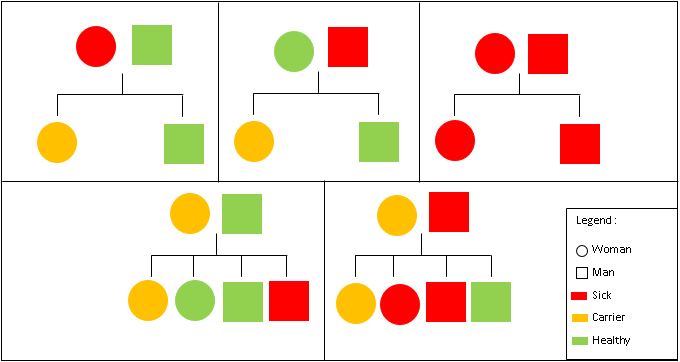Sandbox Reserved 1482
From Proteopedia
(Difference between revisions)
| Line 40: | Line 40: | ||
====Secondary Structure==== | ====Secondary Structure==== | ||
Factor VIII protein is composed of six globular domains: A<sub>1</sub>-A<sub>2</sub>-B-A<sub>3</sub>-C<sub>1</sub>-C<sub>2</sub> and contains one Ca<sup>2+</sup> and two Cu<sup>2+</sup> ions. It has a molecular weight of 330 kDa <ref name="Ngo" /><ref name="El" /><ref name="uni" />. | Factor VIII protein is composed of six globular domains: A<sub>1</sub>-A<sub>2</sub>-B-A<sub>3</sub>-C<sub>1</sub>-C<sub>2</sub> and contains one Ca<sup>2+</sup> and two Cu<sup>2+</sup> ions. It has a molecular weight of 330 kDa <ref name="Ngo" /><ref name="El" /><ref name="uni" />. | ||
| + | |||
| + | In the following, the structure of an engineered protein is further described. This protein has no B domain to mimic the active factor VIIIa. In addition, it is more amenable to structural studies because it shows higher stability expression levels and structural homogenity <ref name="Ngo" /><ref name="toole">Toole JJ, Pittman DD, Orr EC, Murtha P, Wasley LC & Kaufman RJ. A large region (approximately equal to 95 kDa) of human factor VIII is dispensable for ''in vitro'' procoagulant activity. Proceedings of the National Academy of Sciences. 1986 Aug; 83(16): 5939-5942. PMID: 3016730 doi https://doi.org/10.1073/pnas.83.16.5939</ref>. | ||
The three A domains are homologous to the A domains of the copper-binding protein [[Ceruloplasmin]] <ref name="wikipedia" /><ref name="El" />. Together, they form a triangular heterotrimer where the A<sub>1</sub> and A<sub>3</sub> domains interact with the C<sub>2</sub> and C<sub>1</sub> domains, respectively <ref name="Ngo" />. | The three A domains are homologous to the A domains of the copper-binding protein [[Ceruloplasmin]] <ref name="wikipedia" /><ref name="El" />. Together, they form a triangular heterotrimer where the A<sub>1</sub> and A<sub>3</sub> domains interact with the C<sub>2</sub> and C<sub>1</sub> domains, respectively <ref name="Ngo" />. | ||
| Line 45: | Line 47: | ||
The C domains belong to the phospholipid-binding discoidin domain family <ref name="wikipedia" />. They are adjacent at the base of the triangular heterotrimer. Moreover, C<sub>1</sub> and C<sub>2</sub> domains are structurally homologous and they have the ability to bind the membrane. Indeed, both C domain protrude three β-hairpin loops with hydrophobic and basic residues in the same direction. Thanks to these loops the factor VIII might interact with the phospholipid bilayer. <ref name="Ngo" /> | The C domains belong to the phospholipid-binding discoidin domain family <ref name="wikipedia" />. They are adjacent at the base of the triangular heterotrimer. Moreover, C<sub>1</sub> and C<sub>2</sub> domains are structurally homologous and they have the ability to bind the membrane. Indeed, both C domain protrude three β-hairpin loops with hydrophobic and basic residues in the same direction. Thanks to these loops the factor VIII might interact with the phospholipid bilayer. <ref name="Ngo" /> | ||
| - | Factor VIIIa is obtained by cleavage and release of the B domain <ref name="wikipedia" /><ref name="Ngo" /><ref name="toole" | + | Factor VIIIa is obtained by cleavage and release of the B domain <ref name="wikipedia" /><ref name="Ngo" /><ref name="toole" />. Although factor VIIIa can be formed from at least two cleavages involving Arg372 and Arg1689, fully active factor VIIIa is obtained only after a third cleavage at Arg740 <ref name="Ngo" />. |
Revision as of 16:09, 9 June 2019
Coagulation Factor VIII (3cdz)
| |||||||||||
References
- ↑ 1.00 1.01 1.02 1.03 1.04 1.05 1.06 1.07 1.08 1.09 1.10 1.11 1.12 1.13 https://en.wikipedia.org/wiki/Factor_VIII [11.01.2019]
- ↑ 2.00 2.01 2.02 2.03 2.04 2.05 2.06 2.07 2.08 2.09 2.10 2.11 2.12 2.13 2.14 2.15 2.16 2.17 2.18 2.19 Ngo JC, Huang M, Roth DA, Furie BC, Furie B. Crystal structure of human factor VIII: implications for the formation of the factor IXa-factor VIIIa complex. Structure. 2008 Apr;16(4):597-606. PMID:18400180 doi:10.1016/j.str.2008.03.001
- ↑ 3.0 3.1 Antonarakis SE. Molecular genetics of coagulation factor VIII gene and hemophilia A. Thromb Haemost. 1995 Jul;74(1):322-8. PMID:8578479
- ↑ Ragni MV. Mimicking Factor VIII to Manage the Factor VIII–Deficient State. The New England journal of medicine. 2018 Aug; 379(9): 880-882. doi: 10.1056/NEJMe1808789
- ↑ Patek AJ & Taylor FHL. Hemophilia. II. Some properties of a substance obtained from normal human plasma effective in accelerating the coagulation of hemophilic blood. The Journal of clinical investigation. 1937 Jan; 16(1): 113-124. PMID: 16694450 doi: 10.1172/JCI100829
- ↑ Dallman PR & Pool JG. Treatment of hemophilia with factor VIII concentrates. New England Journal of Medicine. 1968 Jan ; 278(4): 199-202. PMID: 5711341 doi: 10.1056/NEJM196801252780406
- ↑ 7.0 7.1 7.2 7.3 7.4 7.5 7.6 7.7 7.8 El Khorassani M & Benkirane AN. Le facteur VIII coagulant. Médecine du Maghreb. 1996; 55: 11-13.
- ↑ Ljung RC. Prevention and management of bleeding episodes in children with hemophilia. Pediatric Drugs. 2018 Aug; 1-10. doi https://doi.org/10.1007/s40272-018-0307-z
- ↑ 9.0 9.1 https://www.uniprot.org/uniprot/P00451 [11.01.2019]
- ↑ 10.0 10.1 10.2 http://www.rcsb.org/structure/3CDZ [11.01.2019]
- ↑ 11.0 11.1 11.2 11.3 Toole JJ, Pittman DD, Orr EC, Murtha P, Wasley LC & Kaufman RJ. A large region (approximately equal to 95 kDa) of human factor VIII is dispensable for in vitro procoagulant activity. Proceedings of the National Academy of Sciences. 1986 Aug; 83(16): 5939-5942. PMID: 3016730 doi https://doi.org/10.1073/pnas.83.16.5939
- ↑ 12.0 12.1 12.2 12.3 12.4 12.5 12.6 12.7 12.8 Bihoreau N, Fontaine-Aupart MP, Lehegarat A, Desmadril M, Yon JM. First determination of the secondary structure of purified factor VIII light chain. Biochem J. 1992 Nov; 288 ( Pt 1): 35-40. PMID:1445279 doi: 10.1042/bj2880035
- ↑ 13.0 13.1 13.2 13.3 13.4 Srivastava A, Brewer AK, Mauser‐Bunschoten EP, Key NS, Kitchen S, Llinas A, Ludlam CA, Mahlangu JN, Mulder K, Poon MC & Street A. Guidelines for the management of hemophilia. Haemophilia. 2013 Jan; 19(1): e1-e47. PMID: 22776238 doi: 10.1111/j.1365-2516.2012.02909.x
- ↑ 14.0 14.1 14.2 Konkle BA, Huston H & Fletcher SH. Hemophilia A, Synonym: Factor VIII Deficiency. Gene Rewiews. 2017 Jun. PMID: 20301578
- ↑ White GC, Rosendaal F, Aledort LM, Lusher JM, Rothschild C, Ingerslev J. Definitions in hemophilia, Recommendation of the scientific subcommittee on factor VIII and factor IX of the scientific and standardization committee of the International Society on Thrombosis and Haemostasis. Thromb Haemost. 2001 Mar; 85(3): 560. PMID: 11307831

